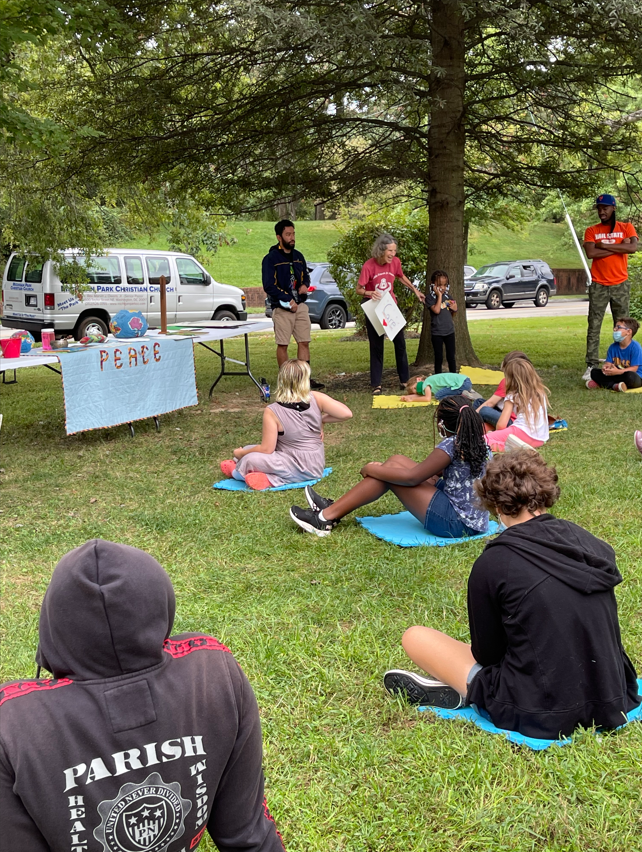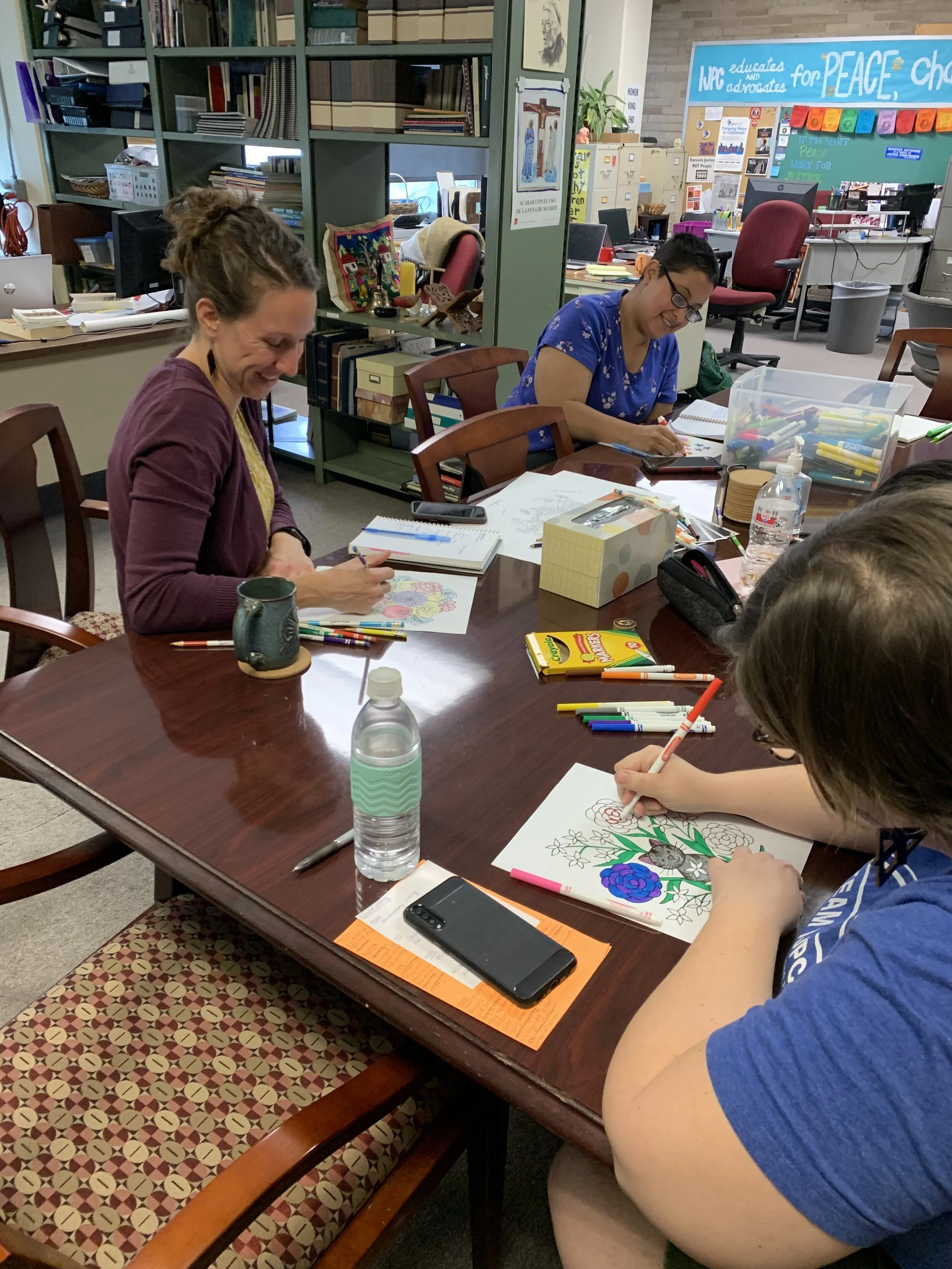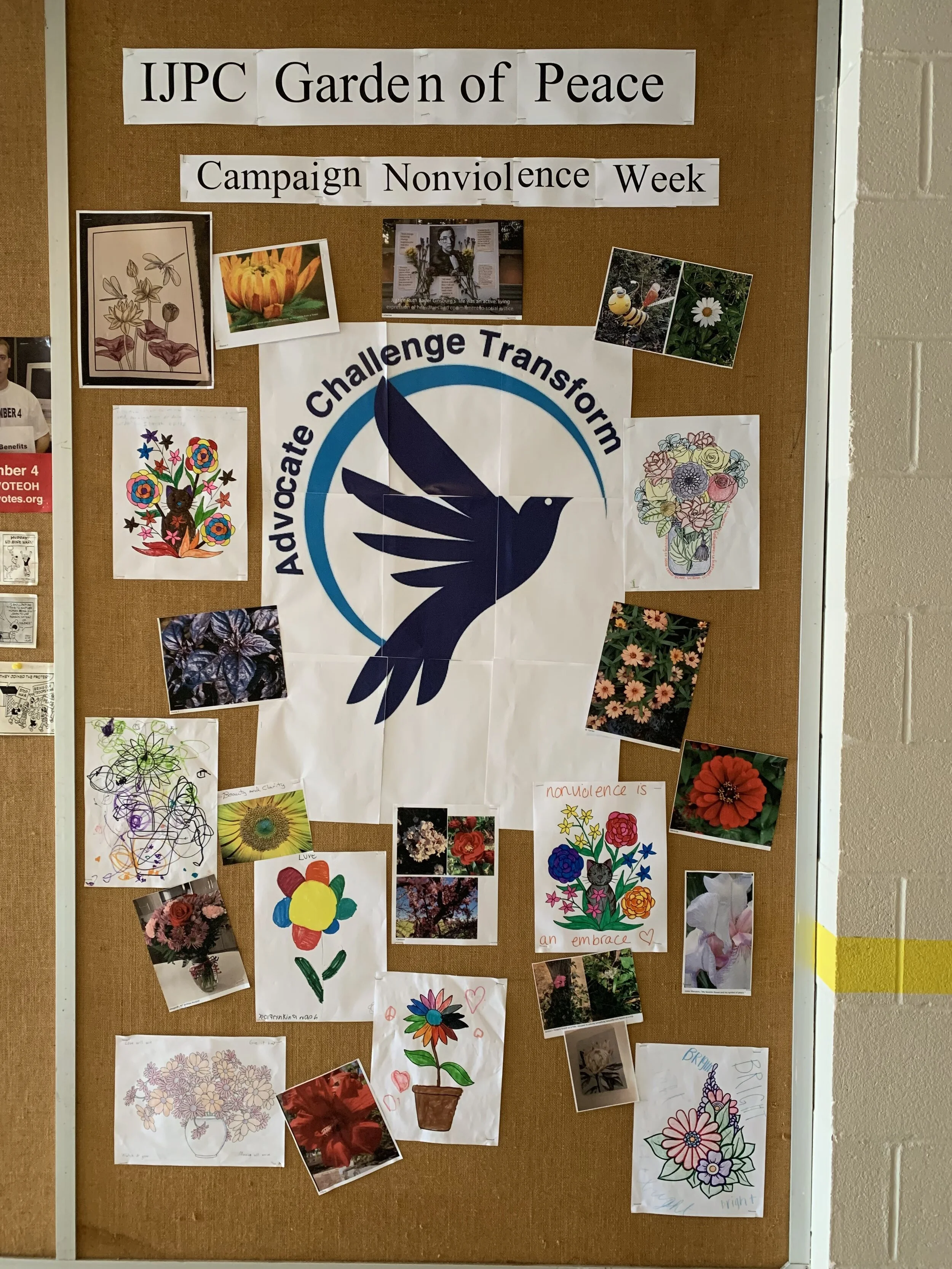Mississippi, Washington, North Carolina, and Ohio Share their Actions








As organizers get to rest and recover from their efforts, we continue to receive reports from actions around the country. Our collective nonviolent efforts work to connect the dots between the movements to abolish different types of violence, from the personal/interpersonal to nuclear weapons to the climate crisis. Read on to hear reports from the people who made these actions happen, and remember to send us your reports (with images, audio, video, and anything else you might have!) so we can share your efforts too.
Debora BurchVanPembrok of Southaven, MS shares: “We performed 108 Sun Salutations for peace and non-violence to bring awareness to how movements can bring peace and non-violence in our own bodies. We gain insight into how actions of multiple bodies can work together to cultivate peace and non-violence in larger society.”
Rodney Brunelle of Seattle, WA writes: “We stood on an Interstate 5 overpass in Seattle with ABOLISH NUCLEAR WEAPONS banners and signs. Responses from motorists was overwhelmingly positive and joyful. As one member observed, ‘It was a celebratory type of occasion, and by their reactions, if those on the freeway could vote up or down—there would be no nuclear weapons.’ National Public Radio's local station KUOW reporter, Gracie Todd, interviewed two of our group (Ground Zero Center for Nonviolent Action), visited us on the overpass and produced two short pieces which aired on KUOW on Friday, September 24. In one piece, Ms. Todd said in part, ‘While some argue that nuclear weapons are necessary, surveys have shown that the majority of Americans disagree, and support decreasing or eliminating the nation's stockpiles. The threat is close to home. One of the world's largest concentrations of nuclear weapons sits just miles away across the Puget Sound at Kitsap Bangor Submarine Base. And experts say that in the case of a nuclear war, Seattle would be a likely target.’ Putting this message before the public simply resets in the minds of citizens the need to eliminate nuclear weapons. Over recent decades the military industrial congressional complex has successfully removed the threat of nuclear annihilation from public discourse. Putting the message in front of their windshields helps to re-engage them with the issue.
Sue Woodling of Raleigh, NC tells us: “FridaysForFuture is a youth-led and organized global climate strike movement that started in August 2018. A few members of Campaign Nonviolence NC took their climate-themed parachute to the Legislative Building to promote climate change. We will celebrate Climate Action Days again on the 17th and 18th. On October 2nd some Campaign Nonviolence NC members celebrated Gandhi’s birthday which is now the International Day of Nonviolence. A few of us gathered under the globe in Raleigh to pray for peace and to pledge to use non-violence in all our conflict resolution. The International Day of Nonviolence was established on 15 June 2007 according to United Nations General Assembly resolution A/RES/61/271. We believe that it is important to make our advocacy issues known to the public and encourage others to advocate for peace and justice. We did this by displaying our message in downtown Raleigh.”
Bekky Baker of Cincinnati, OH reports: “We asked participants to contemplate nonviolence through drawing a flower or finding a flower in nature and sharing that with us. Participants sent in the flowers they chose with phrases or words that exemplified nonviolence to them. At the end of the week, we compiled the submissions sent in and organized them in the hallway of our office building around our peace dove. Art continues to be a form of activism and a way to connect with others through something beyond language. For this activity, I really wanted people to take time out of their day at their leisure to engage with something that invokes a feeling of goodness and connectedness. Creating a piece of art that connects to other people's pieces of art showcases how vast our similarities and differences are, but that we are all part of one community, much like a garden.”
